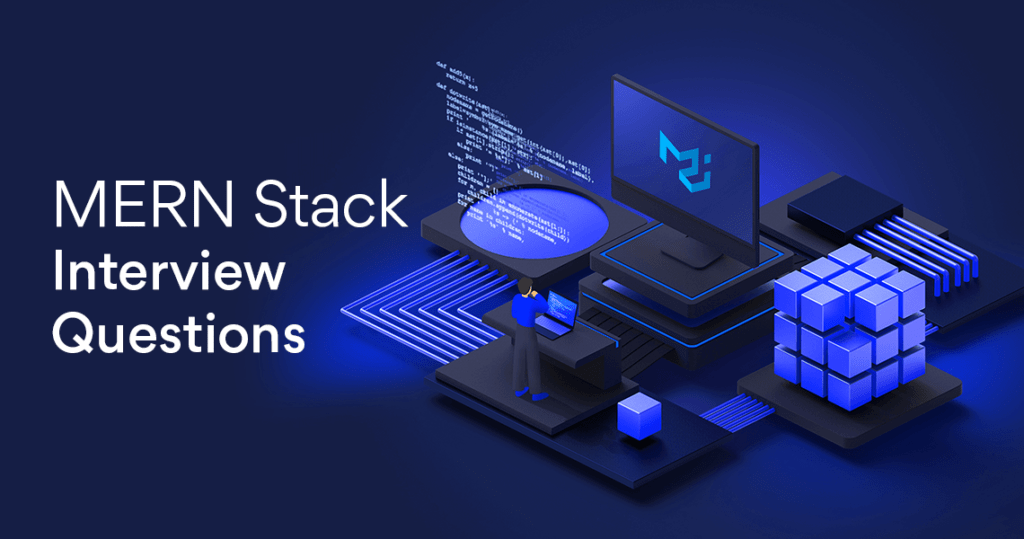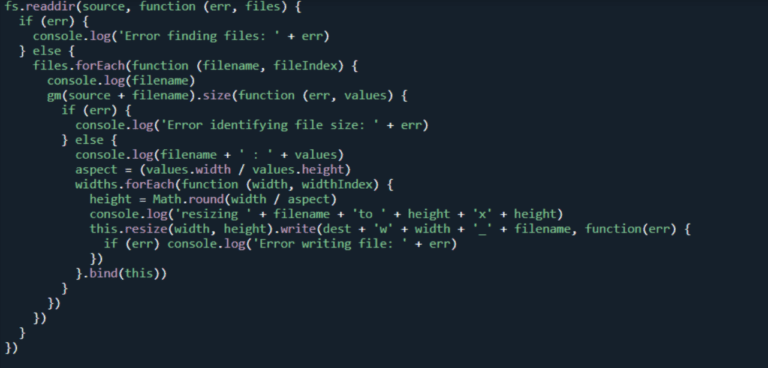MERN Stack Interview Questions

Outline
With the help of our sure-fire MERN Stack interview preparation guide, you can ace your upcoming interview and land your dream position as a MERN Stack developer.
Read, learn, practice and prepare yourself with these sure-shot python interview questions to crack your next interview for a python developer job.
We have compiled the top MERN Stack developer technical interview questions for you to prepare for your next interview. We have divided the questions into three categories based on experience.
✔️ Intermediate MERN Stack interview questions
✔️ Advanced MERN Stack Interview Questions
We have selected the most asked MERN Stack questions in any interview. Each of these questions represents some core insights on MERN Stack Development.
Are you feeling anxious as you wait for your interview for a job as a MERN Stack developer? At this moment, MERN development is one of the top sought after job as a full-stack developer. The demand is high, the salary is better and all you have to do is sign up and crack the interview and get one of those comfortable, work-from-home MERN Development jobs.
In this article, we present to you MERN developer interview questions and solutions that will get you started and assist you in passing your first job interview for a MERN developer. Now, let’s learn top MERN Stack developer interview questions and answers. Let’s start.
Optymize is a US-based company with global clients. We offer 100% remote opportunities as well as competitive payments. Sign up with us, crack the interview and work with Fortune 500 Companies.
MERN Stack Interview Questions for Beginners
1. How does React work?
2. What are React Hooks?
3. What Is Replication In MongoDB?
4. What in React are Higher-Order Components (HOC)?
-Reuse of code, reasoning, and bootstrap abstraction
-Represent Highjacking
-State manipulation and abstraction
-Props manipulation
5. What distinguishes a class component from a functional component?
-ES6 class syntax is used in class-based components. It may employ lifecycle methodologies.
-Components of a class extend React components.
-To access the properties and methods that you specify inside the class components in this section, you must use the keyword.
Functional Components
-Comparing functional components to class-based functions, they are easier.
-Functional Components primarily concentrate on the application’s user interface (UI), not on its behaviour.
-These are really render functions in the class component, to be more accurate.
-Utilizing Reach Hooks, Functional Components may simulate lifecycle events and have state.
6. By asynchronous API, what do you mean?
7. What is Reconciliation in ReactJS?
8. What is Sharding in MongoDB?
Intermediate MERN Stack Interview Questions
We have gathered some challenging MERN Stack interview questions for you in this part. You can get assistance from this section with these precise types of intermediate MERN Stack interview questions you might face while looking for work.
1. What is Callback Hell and what is the main cause of it?

When individuals attempt to build JavaScript so that execution happens visibly from top to bottom, callback hell results. Many folks commit this error! Other programming languages like C, Ruby, or Python use the assumption that whatever occurs on line 1 will be completed before line 2’s code begins to run, and so on.
2. How can you achieve Transaction in MongoDB?
An operation on a single document in MongoDB is atomic.
This single-document atomicity eliminates the requirement for multi-document transactions for many practical use cases since you can utilise embedded documents and arrays to record connections between data in a single document structure rather than standardising over numerous documents and collections.
MongoDB enables multi-document (distributed) transactions for circumstances that call for the atomicity of reads and writes to many documents (in a single or several collections).
3. How does Node.js handle Child Threads?
In its purest form, Node.js is a single thread process. The developer is not given access to child threads or thread management techniques. For some operations, such asynchronous I/O, js does create child threads, but they happen in the background and don’t interfere with the main event loop or execute any JavaScript code for the application.
There are tools available to provide threading functionality in a Node.js application, such as the ChildProcess module.
4. What are Pure Components?
With the exception of handling the shouldComponentUpdate function for you, PureComponent is identical to Component.
PureComponent does a quick comparison of both props and state when either changes. Component, on the other hand, will not, out of the box, compare current props and state to the next. Therefore, anytime shouldComponentUpdate is invoked, the component will automatically re-render.
5. How does concurrency work in Node.js?
With node.js, everything runs simultaneously with the exception of your code.
This implies that anytime you execute an async function, such as performing i/o operations on files, accessing databases, requesting urls, etc., those threads are used. In fact, there are many threads operating inside the Node.js virtual machine (or a thread pool, if you prefer).
Your code, on the other hand, uses a single thread to process events that are queued up in an event queue. Therefore, whenever an async action is complete, a new event is added to the event-queue with that callback when a callback is registered. This reference is really provided to the background worker thread.
The I/O operation is carried out by a thread that Node generates or utilises when it receives an I/O request, and after it is complete, Node pushes the outcome to the event queue. If the execution stack of the Node is empty, the event loop examines the queue and adds the queue result to the execution stack for each such event.
Concurrency is managed by Node in this way.
Advanced MERN Stack Interview Questions
1. Explain advantages of BSON over JSON in MongoDB?
2. How does Node.js handle Child Threads?
In its purest form, Node.js is a single thread process. The developer is not given access to child threads or thread management techniques. For some operations, such asynchronous I/O, js does create child threads, but they happen in the background and don’t interfere with the main event loop or execute any JavaScript code for the application.
There are tools available to provide threading functionality in a Node.js application, such as the ChildProcess module.
3. What is prop drilling and how can you avoid it?
A deeply nested component frequently has to consume data given by another component that is much higher in the hierarchy while developing a React application. Simply passing a prop from one component in the hierarchy to the next, from the source component to the deeply nested component, is the easiest method. Proper drilling is what this is.
Prop drilling’s main drawback is that it makes components that shouldn’t normally be aware of the data more complicated and difficult to maintain.
Using React context is a frequent strategy to prevent prop drilling. Using either a Consumer component or a useContext hook, this enables the definition of a Provider component that feeds data and enables nested components to consume context data.
4. What do you know about Dependency Injection?
You may create a slackly connected software by using dependency injection to separate client creation dependencies from activity. By utilising the components, it also enables customization of the behaviour of apps.
It enables injecting the service essentially in ways independent of client use. Therefore, it may be possible to stop the client from altering the dependencies that underlie service updates.
5. What is JSX in ReactJS?
6. What is the difference between Shadow DOM and Virtual DOM
Virtual DOM aims to prevent pointless DOM modifications, which are costly in terms of performance because they frequently need re-rendering of the page. As a result, not every modification necessitates a re-render, but rather, re-rendering only occurs once once a set of changes have been made to the DOM.
This is made possible by the virtual DOM. The main goal of Shadow DOM is to encapsulate the implementation. A single custom element is capable of implementing more-or-less complicated DOM and logic. A page can import a whole web application of any complexity, but it can also create simpler reusable and composable components as custom elements with the underlying representation concealed in the shadow DOM.
Conclusion
Keep in mind that technical proficiency is only one aspect of the hiring process. Both prior experience and soft skills are essential if you want to be hired for a high-paid web development position.
Keep in mind that many of the MERN Stack Stack interview questions are open-ended. Not just the answer you memorised, but also your reasoning will be of interest to the interviewer. Always be prepared to address any follow-up inquiries about how you came to your conclusion. Describe the way you think.
Good luck with your upcoming MERN Stack interview! You can go through our MERN Stak developers jobs here.


![Top 10 Freelance Websites to Hire Python Developers in 2023 [Updated]](https://optymize.io/wp-content/uploads/2022/09/Hiring-Python-Developers-1-768x394.png)


